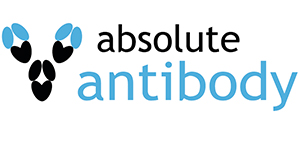Anti-EGFR (7A7)
Anti-EGFR [7A7], Recombinant, IgG1 kappa, Rat
SKU
ABAAb00134-6.1
Packaging Unit
200 μg
Manufacturer
Absolute Antibody
Availability:
loading...
Price is loading...
CloneID: 7A7
Antigen Long Description: Recombinant extracellular domain of murine EGFR (rECD-mEGFR).
Origin Pub PMID: 21592580
Buffer Composition: PBS with 0.02% Proclin 300.
Chimeric Use Statement: This chimeric rat antibody was made using the variable domain sequences of the original mouse IgG1 format, for improved compatibility with existing reagents, assays and techniques.
Available Custom Conjugation Options: AP, HRP, Fluorescein, APC, PE, Biotin Type A, Biotin Type B, Streptavidin, FluoroProbes 647H, Atto488, APC/Cy7, PE/Cy7
Uniprot Accession No.: P00533
Specificity Statement: Recognizes the extracellular domain of EGFR.
Application Notes (Clone): The antibody was generated in order to establish a mouse model for in vivo pre-clinical evaluation of therapies targeting EGFR. The antibody was able to recognize the murine and human EGFR expressed on 3LL or A431 tumor cell lines by flow cytometry. Moreover, the antibody could immunoprecipitate EGFR of 3LL cell lysate, it was used in immunohistochemistry on mouse skin tissue and mammary adenocarcinoma, and it was able to detect EGFR in Western blots (Garrido et al., 2004; PMID: 15312307). The antibody inhibited EGF-induced EGFR signaling in D122 tumor cells by reducing EGFR phosphorylation as well as the phosphorylation of molecules involved in downstream EGFR signaling; the antibody showed strong anti-metastatic activity on D122 tumors, for which the contribution of T cells is essential (Garrido et al., 2007). The crystal structure of the Fab fragment of the antibody was determined. The specificity of the antibody to extracellular EGFR was confirmed by ELISA, while competition ELISA showed the antibody does not compete with Nimotuzumab. The antibody recognized a binding site located on the EGFR extracellular domain that is not accessible in its most stable conformations, but that becomes exposed upon treatment, such as with tyrosine kinase inhibitor (Talavera et al., 2011; PMID: 21592580). Talavera et al. observed the antibody recognition is strictly dependent on the experimental setup, and results can vary significantly, depending on seemingly minor experimental variations. In this regard, He et al. claimed to be unable to reproduce previous results obtained with the antibody. In their experiments the antibody did not detect EGFR expression by immunofluorescence or Western blot. Flow cytometry experiments showed surface expression of EGFR in A431 cells, weak staining in 3T3-L1 cells, and no staining on the surface of HPV38 cells. The antibody failed to detect EGFR on the plasma membrane of HPV38 tumour sections and in vivo administration of the antibody in an EGFR-expressing HPV38 tumour model did not have any impact on tumour regression or animal survival (He et al., 2018; PMID: 29552307). However, in 2021 Skibbe and coworker successfully used the antibody to treat mice with established colitis-driven CRCs. In particular, the antibody bound to EGFR by ELISA experiments, in vivo experiments showed the antibody significantly lowered the frequency of large tumors in mice and the antibody induced a significant downregulation of PD-L1 in highly glycolytic CRC cells (Skibbe et al., 2021; PMID: 34830971). Absolute antibody wanted to report these discrepancies in the results of different groups, suggesting that optimization of experimental conditions is crucial for the effectiveness of the antibody.
Antigen Long Description: Recombinant extracellular domain of murine EGFR (rECD-mEGFR).
Origin Pub PMID: 21592580
Buffer Composition: PBS with 0.02% Proclin 300.
Chimeric Use Statement: This chimeric rat antibody was made using the variable domain sequences of the original mouse IgG1 format, for improved compatibility with existing reagents, assays and techniques.
Available Custom Conjugation Options: AP, HRP, Fluorescein, APC, PE, Biotin Type A, Biotin Type B, Streptavidin, FluoroProbes 647H, Atto488, APC/Cy7, PE/Cy7
Uniprot Accession No.: P00533
Specificity Statement: Recognizes the extracellular domain of EGFR.
Application Notes (Clone): The antibody was generated in order to establish a mouse model for in vivo pre-clinical evaluation of therapies targeting EGFR. The antibody was able to recognize the murine and human EGFR expressed on 3LL or A431 tumor cell lines by flow cytometry. Moreover, the antibody could immunoprecipitate EGFR of 3LL cell lysate, it was used in immunohistochemistry on mouse skin tissue and mammary adenocarcinoma, and it was able to detect EGFR in Western blots (Garrido et al., 2004; PMID: 15312307). The antibody inhibited EGF-induced EGFR signaling in D122 tumor cells by reducing EGFR phosphorylation as well as the phosphorylation of molecules involved in downstream EGFR signaling; the antibody showed strong anti-metastatic activity on D122 tumors, for which the contribution of T cells is essential (Garrido et al., 2007). The crystal structure of the Fab fragment of the antibody was determined. The specificity of the antibody to extracellular EGFR was confirmed by ELISA, while competition ELISA showed the antibody does not compete with Nimotuzumab. The antibody recognized a binding site located on the EGFR extracellular domain that is not accessible in its most stable conformations, but that becomes exposed upon treatment, such as with tyrosine kinase inhibitor (Talavera et al., 2011; PMID: 21592580). Talavera et al. observed the antibody recognition is strictly dependent on the experimental setup, and results can vary significantly, depending on seemingly minor experimental variations. In this regard, He et al. claimed to be unable to reproduce previous results obtained with the antibody. In their experiments the antibody did not detect EGFR expression by immunofluorescence or Western blot. Flow cytometry experiments showed surface expression of EGFR in A431 cells, weak staining in 3T3-L1 cells, and no staining on the surface of HPV38 cells. The antibody failed to detect EGFR on the plasma membrane of HPV38 tumour sections and in vivo administration of the antibody in an EGFR-expressing HPV38 tumour model did not have any impact on tumour regression or animal survival (He et al., 2018; PMID: 29552307). However, in 2021 Skibbe and coworker successfully used the antibody to treat mice with established colitis-driven CRCs. In particular, the antibody bound to EGFR by ELISA experiments, in vivo experiments showed the antibody significantly lowered the frequency of large tumors in mice and the antibody induced a significant downregulation of PD-L1 in highly glycolytic CRC cells (Skibbe et al., 2021; PMID: 34830971). Absolute antibody wanted to report these discrepancies in the results of different groups, suggesting that optimization of experimental conditions is crucial for the effectiveness of the antibody.
| SKU | ABAAb00134-6.1 |
|---|---|
| Manufacturer | Absolute Antibody |
| Manufacturer SKU | Ab00134-6.1 |
| Package Unit | 200 μg |
| Quantity Unit | STK |
| Reactivity | Human, Mouse (Murine) |
| Clonality | Recombinant |
| Application | Immunofluorescence, Flow Cytometry, Immunohistochemistry |
| Isotype | IgG1 kappa |
| Host | Rat |
| Product information (PDF) | Download |
| MSDS (PDF) | Download |

 Deutsch
Deutsch







